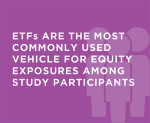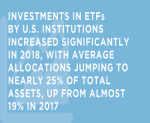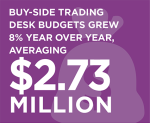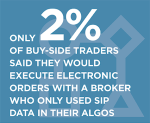LatAm Institutional Investors Embrace ETFs As Instrument of Choice for Volatile Times
March 20, 2019
Latin American institutions continue to adopt ETFs at record levels according to the third annual Latin American ETF Study from Greenwich Associates, with ETF allocation now 18% of total assets in 2018.









